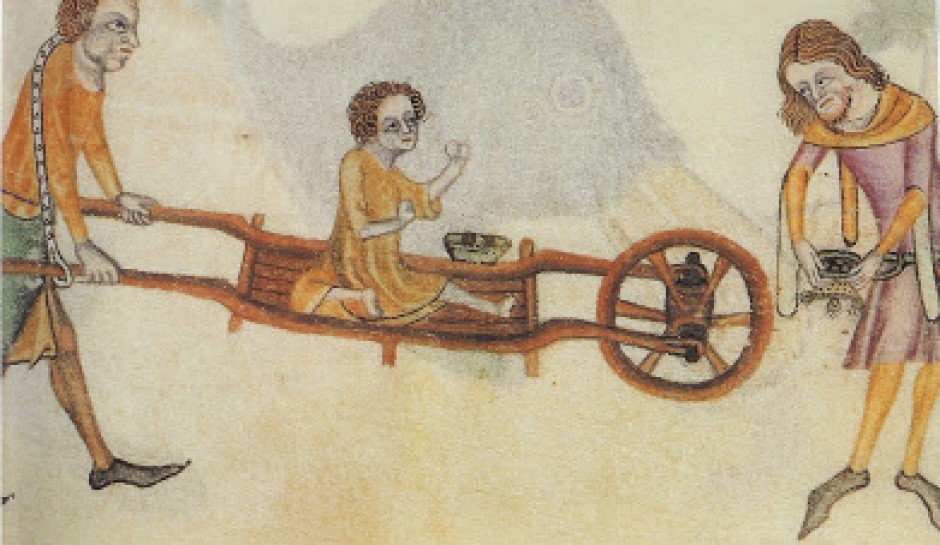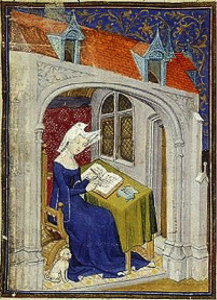Thursday, March 6, 5 pm, 715 Hesburgh Library
Topic:
(Con-)Textualizing Medieval Women
Speakers:
Valerie Garver (Northern Illinois University, History): “‘To Beat Linen and To Wash Clothes’: Low Status Women and Textile Work in the Carolingian World”
Most studies of early medieval women have focused on the elite in no small part because they are far more visible in the sources than their lower status counterparts. Yet examining low status women in the Carolingian world through the lens of textile work provides a means to explore their lives and social roles as well as the ways in which gender may have shaped their experiences and prospects. Considering such labor also offers opportunities to think afresh about methodological issues related to the study women and gender in the early medieval era. Some of the best-documented female labor consisted of textile dues owed to monastic houses and the fabrication of cloth in gynaecea or workshops. The polyptychs, charters, wills, capitularies, and other texts that mention women carrying out textile work frequently reveal clerical elite expectations of low status female textiles workers, for religious men wrote and kept the majority of such documents. Often they mentioned these women, their work, and the places in which they labored in order to keep track of the women’s material products and to direct these workers. Sometimes ecclesiastical leaders expressed negative and even suspicious opinions of such women. These statements generally articulated a belief that female textile workers, particularly those in gynaecea, lacked virtue. Church leaders also sometimes saw aristocratic women as morally weak despite at times urging them to act as moral examples to others. Textile work was a principal means for elite women to demonstrate piety and industriousness. These mixed views of women and their textile work offer an occasion to consider how status affects our understanding of women and gender in the Carolingian world. Crucial differences cut across the textile labor of elite and humble women, not least the fact that texts usually depict aristocratic women taking up textile work by choice while more powerful individuals often compelled low status women to engage in textile work. Social status affected contemporary perceptions and repercussions of gender. Examining female textile labor underlines present methodological difficulties of learning about women whose appearances in the written record are rather sparse. Because of the frequent absence of low status women from texts, it is crucial to examine the archeological evidence for their textile work. Those material remains provide points of comparison with textual information and yields new evidence of humble women’s experiences in Carolingian lands.
Margaret M. Gower (Harvard University, Religious Studies): “Theoretical and Theological Approaches to Christine de Pizan”
In this paper, I approach Christine de Pizan’s retelling of the lives of women saints in Le Livre de la Cité des Dames (1405) from a theoretical and theological perspective.
In Parts I and II of Cité des Dames, Christine makes the case for women and men as equal in potential for virtue because women and men alike are made in the image and likeness of God and possess a rational soul. In Part III, Christine develops her argument for women as possessors of the rational soul, capable of learning and teaching and acting out of concern for the relationship of the soul with God. Through hagiographical exempla, Christine sets out to further demonstrate the capacities of women. Christine’s theological argument for the capacities of women as human beings gets developed in her next text, Le Livre des Trois Vertus. There, Christine has the figure of Prudence instruct her women readers about right conduct.

